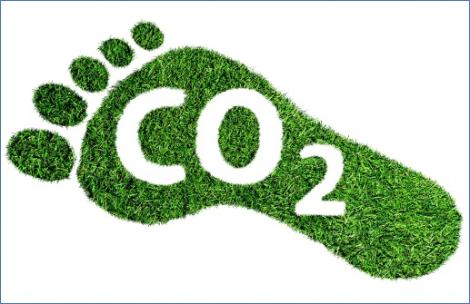Carbon footprint: what can individuals do?
April 2023
Agence pour l’Environnement et la Maîtrise de l’Energie (ADEME)
In France, each inhabitant emits around 9 tonnes of CO2 per year. By 2050, in order to limit global warming to 1.5°C, our individual carbon footprint will need to be reduced to 2 tonnes… But how can we move from collective injunctions to individual action? With the MicMac method and the ‘Nos Gestes Climat’ simulator, the Avenir Climatique association and ADEME are providing some answers. We take stock with Laurène Branaa, head of ‘Nos Gestes Climat’ at ADEME, and Mathieu Farges, volunteer coordinator of the Carbone Campus project at Avenir Climatique.

How aware are French people of their carbon footprint?
Laurène Branaa
There is a lot of ‘media hype’ around carbon footprints, but this does not help people to understand the issue. On the contrary, it tends to distort perceptions of scale by drawing attention to sometimes anecdotal issues. People feel that sorting their mail and rubbish is enough, but they completely overlook the carbon cost of their air travel or the meat they eat.
Mathieu Farges
In the workshops we organise to raise public awareness of carbon accounting, we also find that certain preconceptions die hard. The wealthiest people tend to think that their carbon footprint is better than that of modest households who eat less organic food and drive diesel cars… But experience shows us that carbon footprints are generally proportional to income: the richer you are, the more you consume and the more you emit.
Why did you choose a carbon footprint simulator to encourage individuals to take action on their emissions?
M. F.
At our events, we realise that it is very frustrating for people to realise the scale of the problem without knowing what they can do on their own to improve the situation. It makes them feel guilty without empowering them! We felt it was important to closely link awareness and courses of action, as is done with corporate carbon footprints. That’s what we did with the My Carbon Impact, My Concrete Actions initiative – known as MicMac to those in the know – which paved the way for ADEME’s online tool, Nos Gestes Climat (Our Climate Actions).
L.B.
Launched in 2020 in partnership with the Association Bilan Carbone, Nos Gestes Climat is both an awareness-raising platform and a decision-making tool. It identifies the most emission-intensive areas of our daily lives and helps us choose which levers to pull first. We are currently rethinking the ‘levers’ section to make it even more motivating.
Beyond raising awareness, what conditions need to be in place to change mindsets and behaviours?
M.F.
First, we need to break the triangle of inaction, an expression that refers to a situation of collective gridlock where politicians, businesses and individuals shirk their responsibilities by blaming each other. Citizens have a key role to play here by putting pressure on private actors and local authorities to do their part in decarbonising our society.
L.B.
I fully share this point of view, and one of the proposals for action in ‘Nos Gestes Climat’ focuses precisely on this point. I also believe that we all need inspiring examples, that we need to be encouraged to do things that make the transition exciting and appealing. This can be achieved through very simple things, such as highlighting the positive aspects of low-carbon measures: the health benefits of cycling, tasty vegan recipes, dream holiday destinations that don’t require flying, etc.